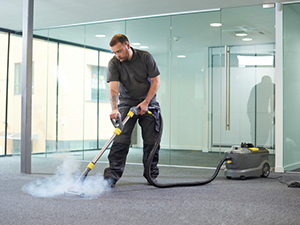
To smell or not to smell…that is the question.
The olfactory sense retains the longest memory in the human mind and is often more judgemental than sight when communicating with the brain.
The impulses the nose nerves transmit affect our emotions, perceptions and our reactions. And it is so subjective! No two humans relate to odours, good or bad, the same way. So it’s no surprise that massive resource is thrown at research to create solutions for odour misdemeanours.
From large outdoor waste tip sites to tragic cadaverine scenarios, smoke affected structures, tobacco impregnated surfaces to musty buildings, rotting foods, urine and even the result of a good curry dish. The nose must be accommodated.
Whether your trade or facility responsibility relates to odour control in an acute fashion, such as disaster restoration, or in a more obscure way such as, building maintenance, an understanding of the dynamics of odour control is essential to guarantee any measure of success.
Odours emanate from a source and the eradication of this source has probably the single biggest impact on eliminating an obnoxious odour. The physical removal of a mal-odour source is an obvious but important step. However, the source is not always visible and not always subject to physical removal.
Take for instance urine settled down to the base of a carpet. These mal-odour sources which require combined chemical and equipment teamwork are the situations where it’s easiest to get it wrong.
A key question to ask is, do I understand what chemistry the odour source will respond to, and what process is required to achieve the desired result? Let’s take urine again as an example – many public washrooms suffer from the effects of this foul odour. Attempts to overcome this mostly come down to the use of chlorine bleach, strong disinfectants or some form of deodorising spray.
The uric crystal is a tough, robust compound which requires an acid to dissolve or an enzyme blend if you have time on your side. Without this knowledge, urine will forever plague your cleaning efforts whether it is washrooms, carpets or tiles.
Conversely, with this know-how, urine affected areas become easy-to-fix jobs. And so, it is with virtually all mal-odour eradication work. Whether the source is rotting organics, mould, body fluids, food related or smoke; obtaining an understanding of the source material and what chemistry is required to eradicate it, will likely be the single biggest step you make toward being an odour control professional.
But the ‘smell or not to smell’ journey doesn’t stop there. Mal-odour molecules are extremely small compounds often less than 1 micron (1 millionth of a metre) in diameter with tobacco smoke about 10 times smaller again.
These mal-odour molecules get trapped in porous surfaces, fibre and fabric yarn, air conditioning systems and are often found air-borne. Hence a correctly remediated building may still have a residual odour. This is where some of the most innovative chemistry excels.
Odour-pairing technology consists of compounds which react with mal-odours (eg mercaptans, trimethylamines, sulphides, cadaverine, putrescine) at a molecular level to create a completely different compound which is odourless.
These innovative agents are blended with biocides, bacterial enzyme solutions, aerial fogging carriers or aerial sprays to provide the professional odour technician and maintenance manager a selection of tools to enable entire mal-odour elimination. Ozone generators are often successfully used in this regard to eliminate smoke odour molecules.
And lastly, the nose to brain communication channel itself needs attention. Even after a mal-odour has been entirely eliminated, a person familiar to that environment and its associated smell will still be told by the brain that a bad smell lingers.
The olfactory system needs a reboot. Once odour remediation work is done, a fresh replacement fragrance will reset the olfactory sense and allow the brain to believe that the previous, persistent obnoxious odour no longer exists.
The secret to creating fresh and pleasant atmospheres doesn’t need to be difficult nor an evasive frustration. It’s as easy to get it right as it is to get it wrong. To smell or not to smell … the answer lies in understanding the basics of odour sources, the chemistry required to eradicate them and following three simple steps:
- Eradicate the source;
- Eliminate residual mal-odour molecules, and;
- Never forget a replacement scent.
This first appeared in the July/August issue of INCLEAN magazine
Comment below to have your say on this story.
If you have a news story or tip-off, get in touch at info@3.106.117.80.
Sign up to INCLEAN’s newsletter.



